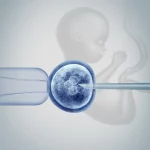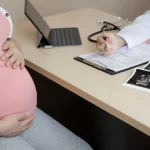
What It Is
Polyps, fibroids, and adenomyosis are structural changes in the uterus that can interfere with implantation. Not every finding requires surgery — but in some cases, removing them improves pregnancy odds. This guide explains:
- When surgery is recommended vs. when you can safely proceed.
- How each condition affects implantation and miscarriage risk.
- What choices change outcomes, budgets, and timelines.
Who It Helps
This guidance is most relevant for :
- Patients with repeated implantation failure (RIF) or recurrent pregnancy loss (RPL).
- Those whose ultrasound, MRI, or hysteroscopy revealed uterine abnormalities.
- Intended parents weighing whether to pause for surgery or move forward with transfer.
Step-by-Step
- Diagnosis → Imaging (ultrasound, MRI, hysteroscopy) to confirm size and location.
- Impact assessment → Ask: Does this lesion distort the cavity or blood flow?
- Decision checkpoint → Small, asymptomatic lesions may not need removal.
- Treatment → Outpatient hysteroscopy, laparoscopy, or medication if needed.
- Recovery & timing → Healing window (2–3 months) before embryo transfer.
Pros & Cons
Pros of surgery
- Restores normal uterine environment.
- Reduces miscarriage risk.
- Often improves implantation odds for RIF/RPL patients.
Cons / trade-offs
- Delays transfer by 1–3 months.
- Surgical and anesthesia risks (low but real).
- Added cost (often $2,000–$6,000, depending on scope and insurance).
- Not all lesions actually impair outcomes.
Costs & Logistics
- Diagnostics (ultrasound, hysteroscopy, MRI): $300–$1,500.
- Surgical removal (polyps/fibroids): $2,000–$6,000 (insurance coverage varies).
- Adenomyosis treatments (GnRH, surgery, or both): $1,500–$5,000.
- Insurance pre-authorizations are often needed; budget planning helps avoid delays.
What Improves Outcomes
- Removing polyps or submucosal fibroids that distort the uterine cavity.
- Treating adenomyosis with medical suppression before transfer.
- Careful timing — ensuring full recovery before embryo transfer.
- Using checklists to avoid unnecessary “add-on” procedures.
Case Study
A 38-year-old with three failed transfers was found to have a 2.5 cm submucosal fibroid. After a hysteroscopic removal and a 2-month recovery, her next transfer succeeded.
Key insight: Surgery delayed transfer but materially improved odds.
Mistakes to Avoid
- Removing very small, harmless fibroids that don’t distort the cavity.
- Ignoring adenomyosis when miscarriage risk is high.
- Rushing into transfer too soon after surgery.
- Skipping a full uterine cavity evaluation before expensive add-ons.
- Overlooking budget, insurance, and healing timelines.
FAQs
Q. Do all fibroids or polyps need removal before IVF?
Ans : No. Only those that distort the uterine cavity or clearly impact implantation need intervention.
Q. How does adenomyosis affect IVF outcomes?
Ans : It can lower implantation rates and increase miscarriage risk. Suppression therapy before transfer often improves odds.
Q. How long after surgery should I wait before transfer?
Ans : Usually 2–3 months, depending on the procedure and healing. Your doctor will confirm with follow-up imaging.
Q. What are the risks of doing IVF without surgery?
Ans : If the lesion is significant, risks include lower implantation rates, higher miscarriage, and wasted embryos.
Q. Is surgery always worth the cost?
Ans : Not always. For small, non-cavity-distorting lesions, the benefit may be minimal. The decision should be individualized.
Next Steps
- Book a free 15-min nurse consult
- Upload your imaging and labs for review
- Request a customized cost breakdown before making your decision
Related Links

Dr. Kulsoom Baloch
Dr. Kulsoom Baloch is a dedicated donor coordinator at Egg Donors, leveraging her extensive background in medicine and public health. She holds an MBBS from Ziauddin University, Pakistan, and an MPH from Hofstra University, New York. With three years of clinical experience at prominent hospitals in Karachi, Pakistan, Dr. Baloch has honed her skills in patient care and medical research.





